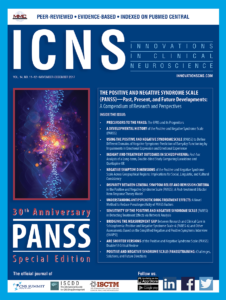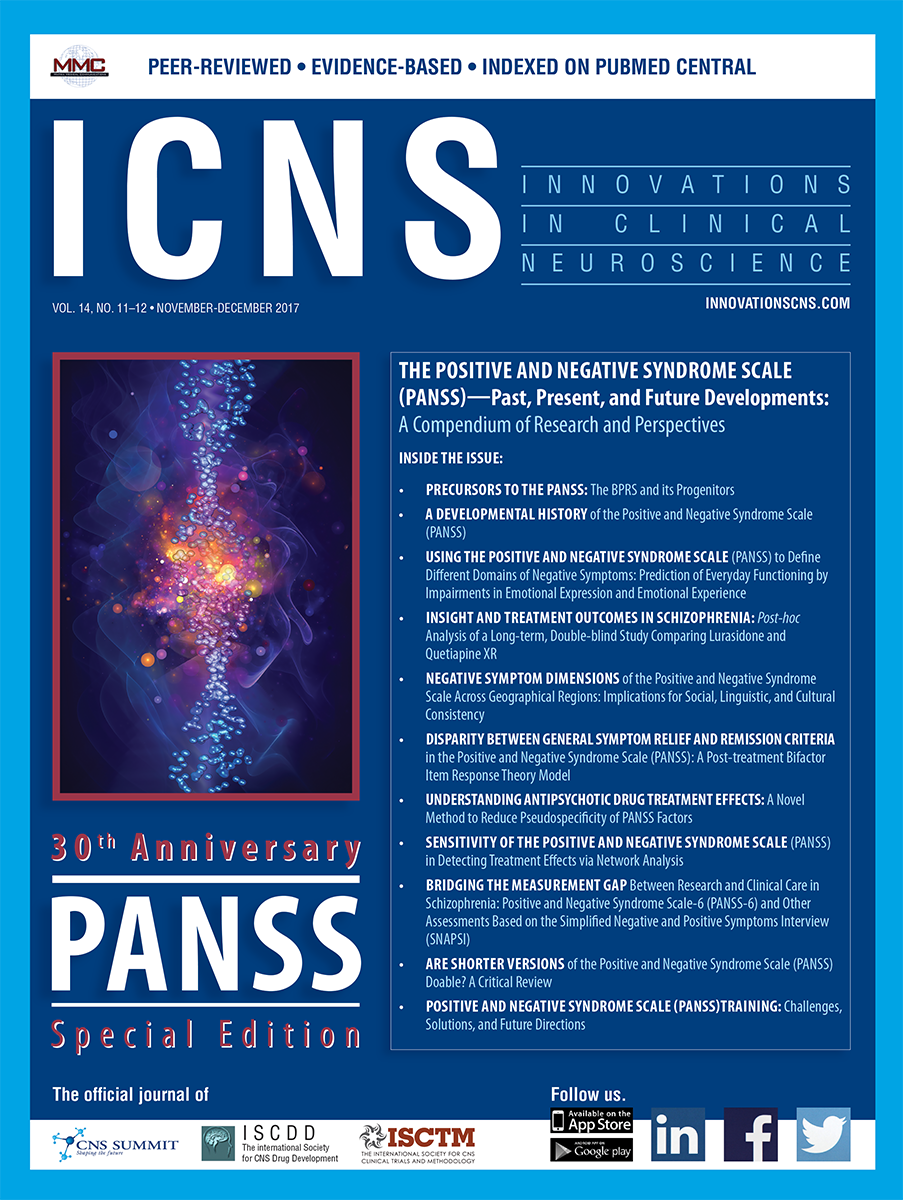
Table of Contents
Precursors to the PANSS: The BPRS and its progenitors
A Developmental History of the Positive and Negative Syndrome Scale (PANSS)
Are Shorter Versions of the Positive and Negative Syndrome Scale (PANSS) Doable? A Critical Review
Positive and Negative Syndrome Scale (PANSS) Training: Challenges, Solutions, and Future Directions


